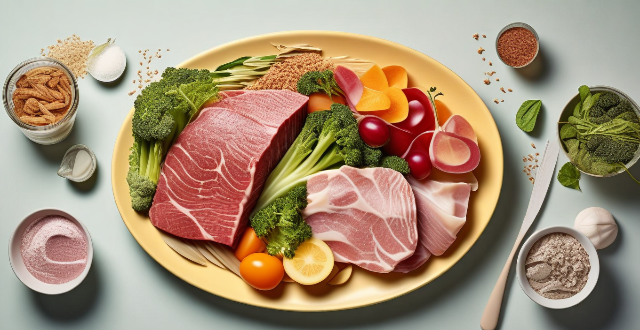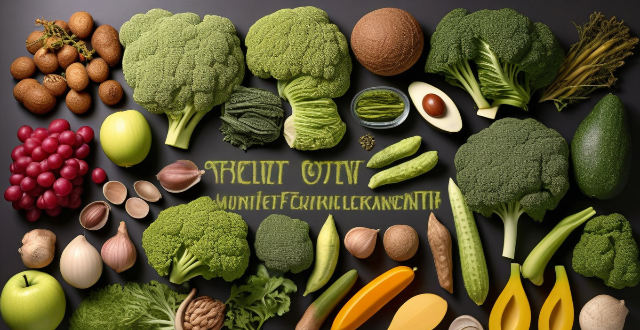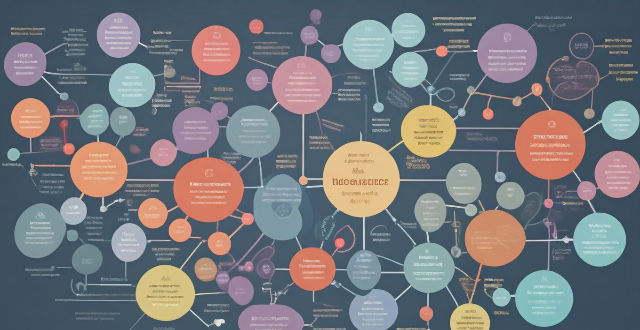Japanese Health

What are some healthy options for Japanese breakfast ?
Japanese breakfast offers a variety of healthy options that provide essential nutrients and flavors. Miso soup is rich in protein and probiotics, aiding digestion and immunity. Tamagoyaki offers high-quality protein in a low-calorie package. Natto is fermented soybeans with vitamins, minerals, and probiotics for gut health. Onigiri are portable rice balls filled with various ingredients for carbohydrates and protein. Grilled fish provides omega-3 fatty acids for heart and brain health. Japanese pickles are low-calorie, fiber-rich vegetables aiding digestion. Yudofu is boiled tofu high in protein and calcium, suitable for vegans or those watching their weight. Okara, the soy milk residue, is high in fiber and protein, promoting fullness and digestive health. Incorporating these dishes into your breakfast routine can offer a balanced and nutritious start to the day while enjoying Japanese flavors.

Can you explain the concept of umami in Japanese cooking ?
Umami is one of the five basic tastes, along with sweet, sour, salty, and bitter. It is often described as a savory or meaty taste, and is commonly found in foods such as mushrooms, soy sauce, and aged cheeses. In Japanese cooking, umami is considered an essential flavor profile that adds depth and complexity to dishes. The science of umami is caused by the presence of glutamate, a type of amino acid, in food. When we eat foods that contain glutamate, it stimulates our taste buds and sends signals to our brain that register as a distinct taste. This taste is often associated with protein-rich foods like meat, fish, and vegetables. In Japanese cuisine, umami is used to enhance the flavors of dishes and create a more complex taste profile. Some common ingredients that are high in umami include miso (fermented soybean paste), dashi (Japanese broth made from dried fish and seaweed), soy sauce, dried shiitake mushrooms, and kombu (a type of seaweed). Umami is used in a variety of ways in Japanese cooking. For example, miso soup is made by mixing miso paste with dashi broth to create a savory soup that is often served as part of a traditional Japanese breakfast. Sushi combines vinegared rice, fresh fish, and soy sauce to create a perfect balance of flavors that includes umami. Ramen noodles use a broth made with chicken or pork bones, which are rich in umami. Teppanyaki involves grilling meat and vegetables on a hot plate, which helps to release their natural umami flavors. In conclusion, umami is an important flavor profile in Japanese cooking that adds depth and complexity to dishes. By using ingredients that are high in glutamate, chefs can create dishes that are both delicious and satisfying.

What kind of ingredients are commonly used in Japanese cuisine ?
Japanese cuisine is known for its unique flavors, fresh ingredients, and beautiful presentation. The most commonly used ingredients in Japanese cooking include white rice, brown rice, sweet rice, tuna, salmon, squid, shellfish, chicken, beef, pork, cabbage, eggplant, green onions, mushrooms, soy sauce, miso, udon noodles, soba noodles, ramen noodles, rice vinegar, sesame oil, nori, wasabi, and pickled ginger. These ingredients combine to create the diverse and delicious flavors that make Japanese cuisine so beloved around the world.

What are some popular Japanese dishes ?
Japanese cuisine is known for its exquisite flavors, meticulous preparation, and beautiful presentation. Some popular dishes include sushi, ramen, tempura, udon, and okonomiyaki. Sushi comes in various forms such as nigiri, sashimi, and maki. Ramen is a noodle soup with different broths and toppings. Tempura is a fried dish with a light batter. Udon is thick noodles served hot or cold with various toppings. Okonomiyaki is a savory pancake with diverse ingredients. Each region in Japan has its own specialties and unique flavors to explore.

How do I make a Japanese-style bento box ?
Bento boxes are a traditional Japanese meal that is packed in a box and typically consists of rice, fish or meat, and vegetables. Here's how you can make your own Japanese-style bento box: Ingredients: - 1 cup of cooked white rice - 1/2 pound of thinly sliced beef or chicken - 1 tablespoon of soy sauce - 1 tablespoon of sugar - 1 tablespoon of mirin (Japanese sweet cooking wine) - 1 teaspoon of sesame oil - 1/4 cup of sliced carrots - 1/4 cup of sliced bell peppers - 1/4 cup of sliced cucumbers - 1/4 cup of sliced cherry tomatoes - 1 sheet of nori (dried seaweed) - Salt and pepper to taste Instructions: 1. Marinate the Meat: In a bowl, mix together the soy sauce, sugar, mirin, and sesame oil. Add the sliced beef or chicken and let it marinate for at least 30 minutes. 2. Cook the Rice: Cook the rice according to package instructions until it is soft and fluffy. Set aside to cool slightly. 3. Prepare the Vegetables: Slice the carrots, bell peppers, cucumbers, and cherry tomatoes into thin strips. Season them with salt and pepper. 4. Cook the Meat: Heat a pan over medium heat and cook the marinated meat until it is browned and cooked through. Set aside to cool. 5. Assemble the Bento Box: Take a bento box and fill one compartment with the cooked rice. Arrange the cooked meat and vegetables in separate compartments or on top of the rice. Cut the nori into small pieces and sprinkle them over the rice and vegetables. 6. Enjoy Your Bento Box: Your Japanese-style bento box is now ready to be enjoyed! Eat it as a delicious and healthy meal or pack it for a picnic or lunch on-the-go.

Can you recommend a good Japanese restaurant in my area ?
The text provides recommendations for finding a good Japanese restaurant in one's area. It suggests checking online reviews, asking locals for recommendations, looking for specialties, and considering the ambiance. The steps to follow include searching online, making a list of potential restaurants, narrowing down options, calling ahead, and trying them out. The author encourages readers to enjoy their culinary adventure and discover personal favorites.

What is the difference between ramen and udon noodles ?
Ramen and udon are two popular Japanese noodle dishes with unique flavors, textures, and cultural significance. Ramen is made from wheat flour, water, salt, and kansui, resulting in elastic and chewy noodles. It is typically served in a meat-based broth flavored with soy sauce, miso, or seafood, and topped with pork, menma, scallions, nori, and a soft-boiled egg. Udon, on the other hand, is made primarily from wheat flour and water, producing thicker and smoother noodles. Its broth is usually clear and light, made from kombu and shiitake mushrooms, and often served hot or cold with simple toppings like tempura, green onions, or grated ginger. Ramen originated in China but became popular in Japan during the early 20th century, evolving into a staple of Japanese cuisine. It has numerous regional variations across Japan, such as Sapporo's miso ramen, Hakata's tonkotsu ramen, and Tokyo's soy sauce-based ramen. Ramen shops can be found everywhere in Japan, from high-end establishments to quick street food stalls, reflecting its deep integration into daily life. Udon has been part of Japanese cuisine for centuries and is traditionally associated with Sanuki (now Kagawa Prefecture), known as the "Udon Kingdom." While udon is typically served in a simple broth or chilled with a dipping sauce, there are also hot pot variations like nabe and kitsune (fox) udon. Udon is often considered comfort food in Japan and is frequently consumed during cold weather or as a quick meal due to its ease of preparation. In conclusion, ramen and udon offer distinct experiences for those who enjoy them. Ramen provides a hearty and filling meal with complex broths and diverse toppings, while udon offers a cleaner taste with simpler broths and toppings, focusing on the pure enjoyment of the noodle itself. Both have their place in Japanese cuisine and continue to captivate noodle enthusiasts around the world.

How do I use chopsticks properly when eating Japanese food ?
Using chopsticks is an art form in Japan, and there are certain etiquette rules that you should follow to show respect for the culture. Here's a step-by-step guide on how to use chopsticks properly when eating Japanese food: 1. Holding the Chopsticks: Hold the first chopstick (the one closer to the tip of the food) like a pencil, resting it between your thumb and index finger. This is your stationary chopstick. Place the second chopstick (the one closer to the end of the food) underneath the first chopstick, resting on your ring finger. This is your moving chopstick. 2. Picking Up Food: Use the tips of the chopsticks to scoop up food rather than pincing it with the ends. This is considered more polite and traditional. For larger pieces of food, it's acceptable to use both chopsticks to pick them up. For smaller items, try using just one chopstick if possible. 3. Eating: If you need to dip your food in soy sauce or another sauce, do so lightly and minimally. Overdoing it can be seen as wasteful. Place the food in your mouth from the chopsticks without making any noise. Chew with your mouth closed. 4. Chopstick Etiquette: Avoid playing with your chopsticks, tapping them on the table, or leaving them standing in your food. These actions are considered impolite. Never use your chopsticks to point at people or gesture with them. This is rude and associated with funeral rites in Japan. Do not lay your chopsticks across your plate or bowl as this resembles incense sticks at a funeral. Instead, rest them on the chopstick rest provided or on the edge of your dish. 5. After Eating: It's common to wipe the ends of the chopsticks before and after use with the small towel or oshibori provided. If you're at a restaurant, leave the chopsticks as they are when you finish eating. Do not put them back in their original packaging or wrap them up. By following these guidelines, you'll not only avoid offending anyone but also show that you respect and appreciate Japanese dining culture. Remember, practice makes perfect!

What vaccinations should I get before traveling to Africa ?
When planning a trip to Africa, it's essential to consider the necessary vaccinations to ensure your health and safety. The continent is vast, and the required immunizations can vary depending on which countries you will visit. Here are some general recommendations: - Yellow Fever Vaccine - Polio Vaccine - Hepatitis A Vaccine - Hepatitis B Vaccine - Rabies Vaccine - Meningococcal Meningitis Vaccine - Typhoid Fever Vaccine - Japanese Encephalitis Vaccine - Cholera Vaccine - Malaria Prevention It's crucial to consult with a healthcare provider or a travel medicine specialist at least 4-6 weeks before your trip to discuss your individual needs based on your itinerary, duration of stay, and personal medical history. They can provide personalized recommendations and ensure you have all the necessary vaccinations for a safe journey.

How does vaccine distribution affect public health ?
Vaccine distribution is crucial for global health, reducing disease incidence and healthcare costs while increasing productivity. Challenges include inequitable access, logistical complexities, and public perception issues.

How does a balanced diet impact women's bone health ?
Balanced diet is crucial for women's bone health, including preventing osteoporosis. Key nutrients are calcium, vitamin D, protein, and phosphorus. Fruits and vegetables also support overall well-being.

What is the role of the World Health Organization (WHO) in promoting global health ?
The World Health Organization (WHO) plays a crucialThe World Health Organization (WHO) plays a crucial by providing leadership, setting norm WHO's work is focused on improving health outcomes worldwide through various activities such as convening stakeholders, establishing international standards for health, generating scientific knowledge to inform policy decisions, providing technical support to countries, and monitoring global health trends.

How can countries improve their preparedness for global health emergencies ?
Countries can improve their preparedness for global health emergencies by strengthening healthcare infrastructure, developing surveillance and early warning systems, enhancing international cooperation, improving public health education and awareness, and establishing contingency plans and policies.

What are the long-term health consequences of climate change ?
The long-term health consequences of climate change are multifaceted and can be categorized into several key areas, including increased frequency and severity of heat waves, extreme weather events, spread of diseases, air quality issues, food insecurity, and mental health impacts. These effects have far-reaching implications for public health and require urgent action to mitigate their impact.

Why is vaccine equity important for global health ?
Vaccine equity is crucial for global health as it ensures fair distribution of life-saving vaccines worldwide. It helps prevent disease outbreaks, reduce health inequalities, promote economic stability, and improve overall health outcomes. By ensuring everyone has access to vaccines, we can create a healthier world for all.

How does sea level rise impact public health, especially in coastal areas ?
Sea level rise, driven by global warming and climate change, poses significant threats to public health in coastal areas through flooding and storm surge, waterborne diseases, environmental health hazards, mental health concerns, economic impacts, and social determinants of health. Addressing this challenge requires a multifaceted approach that includes adaptation strategies, improved infrastructure resilience, and mitigation efforts to reduce greenhouse gas emissions.

How important is hydration in maintaining women's health ?
Proper hydration is crucial for women's health, affecting body temperature regulation, joint lubrication, digestion and nutrient absorption, waste elimination, skin health, weight management, and support during pregnancy and breastfeeding. It is recommended that women drink at least eight glasses of water per day, with individual needs varying based on age, activity level, and climate.

How can a balanced diet contribute to women's health ?
A balanced diet is crucial for women's health, providing essential nutrients, supporting reproductive health, managing weight, preventing chronic diseases, enhancing mental well-being, promoting bone and digestive health, and improving skin and hair health. By incorporating a variety of food groups, women can ensure optimal physical and mental well-being across their lifespan.

How does equitable vaccine distribution affect public health outcomes ?
Equitable vaccine distribution is crucial for global health security, herd immunity, reduced disease severity, economic stability, and social equity. It leads to decreased transmission rates, improved global health indicators, increased trust in health systems, and enhanced research. However, logistical hurdles, political will, and resource allocation are challenges that must be addressed.

How do climate losses and damages impact human health ?
This article discusses the impact of climate change on human health, highlighting various ways in which climate losses and damages can affect well-being. It covers topics such as extreme weather events causing physical injuries and illnesses, worsening air quality leading to respiratory problems, food insecurity resulting in malnutrition, increased waterborne diseases due to warmer water sources, and mental health issues arising from displacement and migration. The article emphasizes the need for a comprehensive approach to address these challenges, including mitigating greenhouse gas emissions, adapting to changing conditions, and providing support for vulnerable populations.

What is the importance of mental health in global health initiatives ?
This document discusses the importance of mental health in global health initiatives. It explains why mental health matters and how it affects physical health, economic stability, and social outcomes. The document also discusses how mental health affects global health initiatives and emphasizes the need for culturally sensitive approaches to address mental health issues sustainably.

In what ways does mental health support impact overall women's health ?
This text discusses the importance of mental health support for women's overall health, highlighting its impact on physical health, emotional well-being, relationships, and work performance. It emphasizes that good mental health can reduce the risk of chronic diseases, improve sleep quality, and help manage pain. Additionally, it mentions how mental health support can enhance emotional well-being by reducing stress, improving mood, and increasing resilience. The text also points out that mental health support can strengthen relationships through improved communication, better emotional regulation, and greater empathy. Lastly, it notes that mental health support can enhance work performance by improving focus, reducing absenteeism, and increasing job satisfaction.

What role does sleep play in maintaining personal health ?
The text discusses the importance of sleep in maintaining personal health, including its roles in physical restoration and repair, energy conservation, weight management, memory consolidation, emotional regulation, cognitive function, stress reduction, mood stabilization, and relationship health. Adequate sleep is crucial for overall well-being, and prioritizing it can support physical, mental, and emotional health.

How does stress affect women's mental health ?
This text discusses the effects of stress on women's mental health, including anxiety and depression, sleep disturbances, emotional eating, low self-esteem, difficulty concentrating, irritability and mood swings, substance abuse, and physical health issues. It emphasizes the importance of self-care practices to manage stress effectively.

What are the impacts of climate change on human health ?
Climate change affects human health in various ways, including increased heat-related illnesses, extreme weather events, changes in disease patterns, food and water security issues, and mental health impacts. It is important to take action to mitigate these effects and protect public health.

How does menstrual cycle affect women's mental health ?
The menstrual cycle can affect women's mental health by causing mood swings, low self-esteem, changes in appetite, fatigue, and psychological symptoms. To manage these changes, it is important to stay hydrated, get enough sleep, exercise regularly, practice mindfulness and relaxation techniques, and seek support from healthcare providers and loved ones.

How can educational psychology aid in addressing students' mental health issues ?
Educational psychology can aid in addressing students' mental health issues by understanding the role of emotional intelligence, promoting a positive school climate, providing early intervention and support services, encouraging self-care and resilience, and facilitating collaboration between educators and mental health professionals.